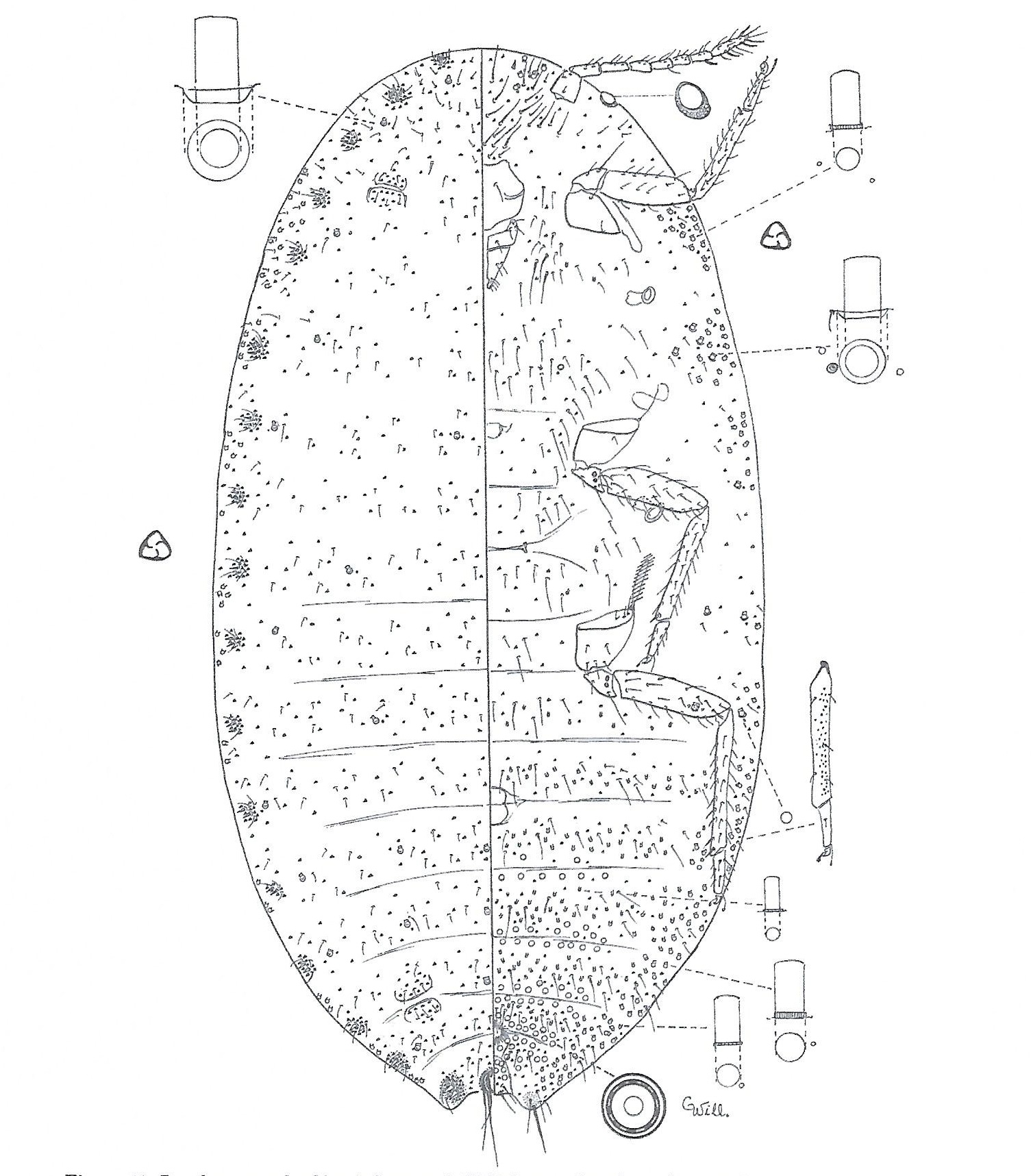Valid Names Results
Pseudococcus colombiensis Granara de Willink, 2018 (Pseudococcidae: Pseudococcus)Nomenclatural History
- Pseudococcus colombiensis Granara de Willink 2018: 20. Type data: COLOMBIA: Intercepted at Ontario, San Bernardino, California, 3/10/1978, on Croton sp., by Ekberg & Lemmon... Holotype, female, by original designation Type depository: Davis: The Bohart Museum of Entomology, University of California, California, USA; accepted valid name Illustr.
Common Names
Ecological Associates
Hosts:
Families: 1 | Genera: 1
- Euphorbiaceae
- Croton | GranarGo2018
Geographic Distribution
Countries: 1
- Colombia | GranarGo2018
Keys
Remarks
- Systematics: Pseudococcus colombiensis is similar to P. Donrileyi from Texas and Mexico and P. solenedyos from Mexico because all three species have tubular ducts with oral rims in front area and between C2 and C3, on at least on one side of the body; translucent pores on posterior tibias; ducts with lateral oral rims on the dorsal abdomen and eyes with discoidal pores. Pseudococcus colombiensis differs from P. donrileyi because 1) it lacks ducts with an oral rim in the frontal area of the venter (present in P. donrileyi); 2) has eyes with a broad sclerotized surface and 9 large discoidal pores (2-6 discoidal pores around the eye on a narrow border in P. donrileyi; 3) penultimate cerarium and anal cerarium are on slightly sclerotized surface (slightly sclerotized anal ceratosis in P. donrileyi); and 4) ducts with conspicuous collars in the margin ventral thoracic associated with discoidal pores (absent in P. donrileyi). It differs from P. solenedyos by having: 1) eyes with a broad sclerotic surface and nine large discoidal pores (three pores on membranous surface in P. solenedyos); 2) Penultimate Cerato and Cerato Anal on slightly sclerosed surface (anal ceratosis on a slightly sclerosed surface in P. solenedyos); and 3) ducts with a conspicuous collar in the ventral thoracic margin and associated with discoidal pores (absent in P. solenedyos). (Granara de Willink & González, 2018)
- Structure: Translucent pores in the tibia. Eyes with a broad sclerotized border and nine discoidal pores. Anal cerarii, on a sclerotized surface, with trilocular pores closely grouped around setae. Tubular ducts with oral rims, 32 on the dorsum, one behind C1 and between C2-C3 and nine on the ventral surface, from C6 to C11. Tubular ducts with oral collars and oral rims, associated with discoidal pores, on both surfaces. (Granara de Willink & González, 2018)
- General Remarks: Detailed description and illustration in Granara de Willink & González, 2018.
Illustrations
Citations
- CaballPaKa2021: distribution, 10
- GranarGo2018: key, 10-14



